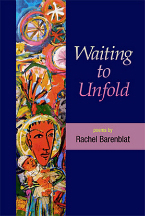Rachel Barenblat's Blog, page 187
June 3, 2013
Reflections on reading aloud
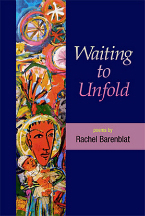 There's always something surreal about reading from a published book of poems. Once these were fragments of language and image which I snatched out of my consciousness and wrote down. Once these were drafts, going through revision, shifting and changing. Once this was a manuscript. Now it is a published book, no longer susceptible to my changes. I grew it, I revised it, and then my publisher midwifed it into being. (Thanks, Beth!) It feels a little bit like we've cut the umbilical cord; the book exists on its own now, independent of me.
There's always something surreal about reading from a published book of poems. Once these were fragments of language and image which I snatched out of my consciousness and wrote down. Once these were drafts, going through revision, shifting and changing. Once this was a manuscript. Now it is a published book, no longer susceptible to my changes. I grew it, I revised it, and then my publisher midwifed it into being. (Thanks, Beth!) It feels a little bit like we've cut the umbilical cord; the book exists on its own now, independent of me.
I remember writing these poems, one by one. I had no notion of a manuscript, not then. I started writing one poem a week because it kept me linked with the life I had known before I became a mother, and because in writing weekly mother poems I could aim to sanctify the experience of caring for a newborn. Writing weekly mother poems, as I had for years written weekly Torah poems, allowed me to assert that this new life of around-the-clock infant care was as holy as the words inscribed on parchment. I felt sometimes that writing these poems was an act of saving my own life. (Melodramatic, sure, but it was how I felt at the time. The endocrine sytem is a fascinating thing. Everything felt exaggerated, then.)
Life now is so different. Now we have a lanky, funny three-and-a-half-year-old who has favorite songs and favorite books and favorite cartoons and favorite repetitive jokes -- so different from the infant he used to be. And now there is a book which I can hold in my hands. Now there is a written account of this journey through the wilderness toward the promised land. There's also an odd feeling of glimpsing moments which would otherwise be lost to me. When I read Waiting to Unfold now, especially the poems from the earliest months, I'm humbled by just how difficult that journey was -- and I wonder whether I would remember any of it if I didn't have these poems as a record of what transpired.
The sleep deprivation, the exhaustion, the colic: some of these are the height of ordinariness. Every parent of a newborn learns to subsist on too little sleep. Every nursing mother and every nursing infant have to learn together how a feeding works. (And so on.) And some of what we went through (the postpartum depression) was difficult in extraordinary ways. My memories of those early months are fogged and blurred. I only remember this much because I wrote it down when it was happening. Had I tried to write these poems six months or a year later, I wouldn't have been able to do it. The incremental changes of infancy are lost to me now, except inasmuch as I managed then to capture them in poetry. When I read those poems now, there's a feeling of being outside of myself -- as though I were watching a movie of my own life, from a great distance.
The trajectory of the collection goes from anticipation to lived experience, and then from sorrow to joy. I'm hoping I can convey that trajectory when I read from the collection aloud. Individual poems are like stars in a constellation. Each one gleams, but in order to see the picture the constellation depicts, one needs to be able to draw the lines between them, to perceive the shape made up by their connections. I wonder how the poems will reach people, what response they will evoke. I am grateful to be able to carry this collection into synagogues and bookstores and into people's lives, to share these words with people who might find meaning there.
The first public reading from Waiting to Unfold is today at Knesset Israel synagogue in Pittsfield following the Kosher Hot Lunch at noon; the second one will be on Sunday June 9 at 4pm at Congregation Beth Israel in North Adams.
June 2, 2013
D'var Torah for Shlakh-Lekha: the scouts, growth, safety, and risk
Here's the d'var Torah I offered yesterday at my shul for parashat Shlakh-lekha. (Cross-posted to my From the Rabbi blog.)
Ten scouts were sent by Moshe into the Land of Canaan to find out what sort of land it might be. This group of ten is called an edah, from the root which means "to witness." They are a witnessing-community, a microcosm of the entire Israelite community dispatched to bear witness to whatever they might find.
When they enter the land, they find amazing fertility and growth. They also find several native tribes, none of whom are known to be friendly.
The scouts spend forty days exploring the land. In Torah, the number forty represents growth and transformation and change. The Flood lasted for forty days; Moshe spent forty days atop Sinai receiving Torah; and now the scouts spend that same amount of time visiting Canaan.
In the end, most of the scouts quail at the prospect of fighting the people who live in a land where even the fruits are as large as a grown man. They say, "We looked like grasshoppers compared with the natives, and we must have seemed as puny as grasshoppers to them, too."
And God is sorely disappointed. God brought the children of Israel all this way, and now they're too scared to enter. So God says: fine -- none of you who are now alive will enter the land, except for Caleb and Joshua, who didn't doubt Me. The rest of you will wander in the wilderness for forty years, one year for each day that the scouts spent in the land.
I used to see this as a punitive response. Now that I'm a parent, I read it differently.
This generation of Israelites was born into slavery. They were shaped by collective trauma. They can't trust in God's promises, even though they experienced the parting of the Sea and the revelation at Sinai. Spiritually, they are wounded children. They can't feel safe taking risks. And it wasn't reasonable of God to expect them to be other than they are. They aren't ready to fend for themselves; they still need manna, they still need care.
God is the nursing mother who tried to wean Her children too soon. She wanted Her children to experience the wonderful and diverse flavors of the wide world -- but the children weren't ready. They still needed the comfort of a long cuddle and some warm milk. So She resigns herself to nursing for longer than She had planned, and resolves to try to introduce them to new things when they're a little bit older, when they're ready to enjoy the adventure instead of being frightened.
At the very end of this portion, we read the lines which we chant as part of kriat shema, instructing us to put tzitzit on the corners of our garments for all time, that we might remember and do all of God's mitzvot. How might we connect tzitzit with this story of the scouts and their fear?
In our community most people only don tzitzit when we put on a tallit to pray. But in the original meaning of this verse, tzitzit were worn constantly -- just as some Jews still wear them constantly now, on what's called a tallit katan, a kind of undershirt with fringes on the corners. Tzitzit are there to remind us of the mitzvot, those acts which connect us with God.
When we remember that we're always connected with God, we can take courage in that connection. That courage sustains us through life's challenges and adventures.
All of us have moments when we feel like grasshoppers in the eyes of others. All of us have moments when our wounds make us defensive and afraid. But when we allow ourselves the time that we need to heal -- and when we look down at our tzitzit and remember that we're connected with something far greater than ourselves -- we can boldly go wherever life may take us, and we can be secure.
Other divrei Torah for this portion:
2006: Little picture, big picture (originally published at Radical Torah)
2007: Compassion and fear (originally published at Radical Torah)
2008: Larger Than Life [Torah poem]
Join me in Pittsfield tomorrow for lunch and poems!
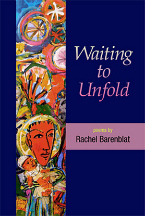
Monday June 3, 12pm
Poetry reading and conversation / signing / Q-and-A / plus kosher lunch! $3
at the Older Adult Kosher Hot Meal Program sponsored by Jewish Federation of the Berkshires
Knesset Israel, 16 Colt Road, Pittsfield
Join Rabbi Rachel Barenblat, author of the newly-published Waiting to Unfold (Phoenicia, spring 2013), for a poetry reading and conversation. Rabbi Barenblat will read from Waiting to Unfold,
which collects poems written during her son's first year of life, and
will then participate in a conversation / Q-and-A about the poems and
what they contain.
Please bring $3 to donate to Jewish Federation in thanks to them for orchestrating this event! (And of course, books will be on sale for $14.)
If you're coming for lunch, please RSVP to Knesset Israel so there are enough
kosher hot meals for everyone. (All are welcome for the reading /
conversation, whether or not you want to enjoy the kosher hot lunch, but
if you do want a meal, let them know.)
June 1, 2013
A blessing over a Middle Eastern apéritif
 I'm not sure when I first tasted arak. Wikipedia tells me that it's the traditional alcoholic beverage across Israel, Palestine, Lebanon, Jordan, Syria and Iraq. It turns out that arak is typically made from the distillation of fermented grapes and/or vines, making it a sort of grappa, though on the second distillation aniseed is added -- hence the drink's characteristic liquorice taste.
I'm not sure when I first tasted arak. Wikipedia tells me that it's the traditional alcoholic beverage across Israel, Palestine, Lebanon, Jordan, Syria and Iraq. It turns out that arak is typically made from the distillation of fermented grapes and/or vines, making it a sort of grappa, though on the second distillation aniseed is added -- hence the drink's characteristic liquorice taste.
I have a distinct memory of drinking arak with Ethan at a bar in Amman back in 2002. That was a business trip for him and a pleasure jaunt for me; I spent most of my days sightseeing, he spent most of his days in meetings, and then in the evening we'd meet for dinner and to stroll around the city and explore Amman by night. And one night we wound up at a bar sipping arak. I seem to remember that I'd tasted arak before that, though. Or maybe it just reminded me of other anise-flavored beverages from other corners of the Mediterranean. I've always loved anise, especially when its setting is at least as much savory as sweet, so arak and I were immediate friends.

During the summer when I lived in Jerusalem, I used to walk from our sublet on Rechov Lincoln to a nearby restaurant and bar. This is five years ago now. It seems both far more recent, and far more distant -- an artifact, I suspect, of the ways in which life shifts when one has a child. But this was in our pre-child days. And because Ethan and I have lived in rural America for the better part of twenty years, I took pains that summer to go out from time to time, if only to experience the unique gifts of city life.
My housemates were a dear rabbinic school friend, her husband, and their daughter, who was three and a half that summer. Their kid was the same age then that our son is now, which is humbling and amazing when I stop to think about it; that was my first experience of living with a little one, and it was part of what made me feel able to take the leap into trying to get pregnant the following fall. Anyway, that kiddo and her mama went to bed early, for reasons I understand now all too well. So sometimes, in the evening, I'd walk to the nearby Restobar by myself, wanting to get out of the apartment and to take advantage of living in a city for a change.
Restobar was usually busy in the evenings, but I could usually find a table where I could nestle out of the way by myself. When my server came around, I would order kos arak, b'vak'sha. When it arrived, I would open up my laptop and use their wireless internet to correspond with Ethan or with friends back home (there was no internet in our apartment) as the melting ice turned the clear liquor cloudy and my mouth tingled with anise. Their menu also featured arak with grapefruit juice, but I was never able to imagine that combination of flavors -- and anyway, my blood pressure meds make grapefruit generally contraindicated. So I stuck with drinking it on the rocks, and was quite content.
Despite living in a small town in western Massachusetts, Ethan and I live a fairly cosmopolitan lifestyle -- but there are certain flavors which are hard to come by around these parts. None of the stores in our entire county stock arak, and for whatever reason, sambuca (which is easy to find) doesn't have the same zing for me. At the end of my Jerusalem summer, I spent my final wad of shekels on a bottle of arak at the airport duty-free shop, meaning to bring it home for Ethan to enjoy with me...only to have it poured into a trash can by an overzealous customs agent at Heathrow, because it hadn't been in a sealed ziploc bag when I got off the plane. Needless to say, I was miffed. (Obviously on some level I still am, or I wouldn't remember the story so well.)
On a recent trip to the big city -- for the final Rabbis Without Borders retreat -- I happened into a liquor store and noticed that they had Israeli arak on their shelves. Bingo: I picked up a bottle and schlepped it happily home. After that, the Berkshires were cool and rainy for a while (there was even danger of frost) so I forgot about the arak entirely. In my mind it's a hot weather beverage, something to sip slowly over ice on a warm night. But this weekend, summer has arrived wholly. And after I put our little guy to bed, my eye chanced on the bottle, and I poured myself a few fingers over ice. It swirled milkily as the ice began to melt on contact with the room-temperature anise-flavored liquid. I wondered whether I would still like it, after all this time.
The first sip was extraordinary. If I closed my eyes I could be right back at the Restobar, listening to people cheering and shouting in Hebrew at a televised soccer match, knowing that an endlessly ancient and endlessly complicated city was just outside the door. Or back at that bar in Amman, sitting on a barstool beside Ethan, listening to the sounds of Arabic around us. Instead here I am at our house in western Massachusetts, listening to local birdsong, surrounded by the rustle of green leaves, our son (God willing) at last falling asleep in his downstairs bedroom. But the taste of the Middle East is delicious and complicated on my tongue, and I am grateful for it.
Is there a bracha for an apéritif? The traditional answer is that alcohol which isn't wine is blessed with the blessing known as shehakol; it's the garden-variety all-inclusive one, the blessing for anything that doesn't have its own dedicated bracha. (It goes like this: "Blessed are You, Adonai our God, ruler of the universe, Who creates all things with Your word.") But I can't help thinking that the right blessing is actually the shehecheyanu, the blessing through which we sanctify time. Blessed are You, Adonai our God, source of all being, who has kept me alive, and sustained me, and enabled me to reach this moment -- and enabled me to be so immersed in memory -- and enabled my connections with places and moments which are far away, but which still live in my mind, and in my heart, and on my tongue.
Related: Foods of Israel: Arak cocktails in The Jew and the Carrot.
May 31, 2013
Choose the milk and honey
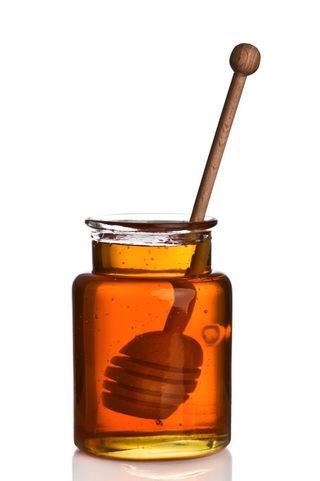 In this week's Torah portion, Moshe sends the scouts into the land to investigate it.
In this week's Torah portion, Moshe sends the scouts into the land to investigate it.
They come back with two reports. It flows with milk and honey. But, the inhabitants made the scouts feel as puny as grasshoppers.
There's a teaching here for us.
We are always entering into new experiences and new adventures.
Every day has the capacity to flow with sustenance and sweetness. And every day has the capacity to leave us feeling dwarfed.
Which one will you choose to focus on, as this day unfolds? Can you lift up the milk and honey, and shed the fear?
This short teaching -- distilled into 100 words -- arose during this morning's meditation minyan at my shul. Shabbat shalom!
Waiting to Unfold conversation at Ask Moxie
Waiting to Unfold is the first book in the Ask Moxie Summer Readalong this year. Magda has posted some opening reflections on the book, as well as questions to spark conversation:
I chose this book because I loved how intimate and raw her poems are. I feel like Rachel is able to capture the very specific and make it universal...
She makes the intimate epic, and the epic intimate. I started crying
again reading these lines from "Night Feeding" in the second cycle:
as a hind longs for water
my soul longs for sleepbut I pace the round carpet
until I can crawl into bedpraying that I get a whole hour
before you summon me with your crieswhich call in equal measure
my milk and my tears
Her use of the scriptural language connects us as mothers with the Divine, with nature, with all animals, and with all other mothers at the same time. It makes us both little and big, everything and nothing as we do what we have to do to nourish our young even when we think it's breaking us. How many of us have cried through feedings? I wonder if anyone hasn't...
I feel like this is the book I would give to someone who said to me, "No, TRY to tell me what motherhood is like," because even though Rachel has had some experiences not all of us have had, the way she captures the emotion of those experiences is the translation of what it's like in that first year of being someone new that you didn't know you would be.
Her post is here: Discussion: Waiting to Unfold by Rachel Barenblat. If you've read the collection and want to chime in with answers to any of her questions, or with thoughts and reflections about how the book resonated (or didn't!) for you, please do.
I'm honored and delighted that Magda chose my book to kick off the Summer Readalong (and I'm looking forward to reading the other books she's chosen and to participating in those conversations -- though I will largely recuse myself from this one unless anyone has a specific question they want to ask me; I tend to think that book discussions are for the readers, not for the author.)
Thank you, Magda! Thank you for reading, Ask Moxie readers!
Waiting to Unfold costs $13.95 (US, CAN) / £9.10 / €10.66 and is available at Phoenicia Publishing and on Amazon (and Amazon UK and Amazon Europe) -- though publisher and author earn more if you buy it directly from Phoenicia. Still: buy it wherever works for you, I'm just happy that people want to read it!
May 30, 2013
On Women of the Wall
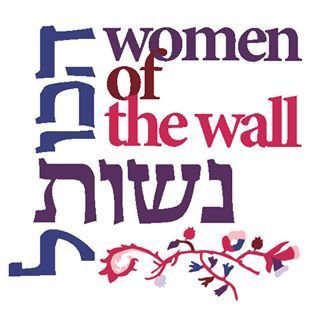 One of my greatest regrets about my summer in Jerusalem, some five years ago now, is that I did not manage to join Women of the Wall to pray together at the Kotel (the Western Wall) on Rosh Chodesh. I'd had every intention of doing so, but when new moon rolled around I was sick with a truly miserable summer cold, and feeling wretched in the particular way one feels when one is ill and far away from home. I've thought of that often in recent months as news about Women of the Wall has been percolating through my various networks to reach me here in the States.
One of my greatest regrets about my summer in Jerusalem, some five years ago now, is that I did not manage to join Women of the Wall to pray together at the Kotel (the Western Wall) on Rosh Chodesh. I'd had every intention of doing so, but when new moon rolled around I was sick with a truly miserable summer cold, and feeling wretched in the particular way one feels when one is ill and far away from home. I've thought of that often in recent months as news about Women of the Wall has been percolating through my various networks to reach me here in the States.
I support Women of the Wall in a deep and heartfelt way. Women of the Wall's mission "is to achieve the social and legal recognition of our right, as women, to wear prayer shawls, pray, and read from the Torah collectively and out loud at the Western Wall." Of course, here in the States, across the liberal movements of Judaism, the freedoms to wear tallit, to be counted in a minyan, and to read from the Torah out loud are taken for granted. There's a strange and often painful irony in the fact that these freedoms are so difficult to pursue in Israel, which is supposed to be a spiritual home for all of us.
One of the best essays I've read on this is On the Ritual Fringes by Rabbi Kari Hofmaister Tuling in the Marginalia Review of Books. Rabbi Tuling touches on a lot of important things: the history of women wearing tallit, the disconnects between Israeli perspectives and American ones, the history of the Orthodox religious monopoly in Israel, and -- of course -- Women of the Wall. Here's an excerpt:
Though traditionalists might discount women’s prayer—or they might view the tallit-wearing as a political stunt—the deeper reality is that prayerful feminism may be found across the spectrum: in the all-female Torah study groups among orthodox women and in the alternate God-language in the Reconstructionist prayer book. It is in fact a heart-felt prayer service that the women are conducting each month at the Wall.
Second, it ignores the broader context: this conflict is not simply about the status of the Western Wall. Rather, at stake here is a series of larger questions regarding the role of women in Judaism and the relationship between Israel and the Diaspora.
Israel and the Diaspora often talk past each other, not recognizing the gulf in their thinking. It is not uncommon, for example, for Israelis to assume that the liberal forms of Judaism are on their way to oblivion, about to disappear in a generation due to intermarriage and assimilation. And, according to this line of thinking, this kind of activist feminism is merely a fad. So, the argument goes, why should Israel accommodate them?
Whereas many American Jews, living as they do in a country where the liberal streams are so clearly visible and established, are simply appalled: why is Israel arresting Jews for engaging in what amounts to normative Jewish practice?
You can read her whole essay here at the Marginalia Review of Books, and I recommend it -- it's both well-written and cogently-argued.
One of the interesting things for me about Women of the Wall is that what they're asking for -- the right of women to daven in tallit, and to pray aloud (not hushing their voices for fear of inadvertantly arousing the men in the men's section), and to read from Torah, at what is commonly considered to be Judaism's holiest site -- is actually substantially less than what I myself would most prefer. I grew up praying exclusively in mixed-gender environments, where men and women sit together, sing together, and pray together. (And my first substantive experience of praying behind a mechitza, a curtain or barrier separating the genders, was actually quite emotionally painful for me -- see Prayer at Panim, 2007.)
In more recent years I've learned to live with separate seating when necessary, and I've even experienced some separate-seating davenen which really uplifted me (see A morning at the Leader Minyan, 2008.) Still, egalitarianism runs deep in me, and I don't generally think that "separate but equal" counts as equality. What I most yearn for at the Kotel would be a space where people of all genders can pray together, aloud, wearing the ritual garments we love, connecting with God in joyful prayer and song. This is more or less what Natan Sharansky has proposed in his plan to make the Kotel a tripartite space: one space for men's prayer, one space for women's prayer, and one space for egalitarian / mixed-gender prayer.
But I'm conscious that it's in part thanks to WoW's efforts to daven at the Wall all these years that we're now able to even begin to conceptualize compromises like the one that Sharansky suggests. Beyond that: I respect the fact that Women of the Wall is truly transdenominational, including not only women who come from egalitarian contexts (Reform, Conservative, Reconstructionist, Renewal) but also women who come from Orthodox contexts and would not be comfortable davening alongside men. I value the incusivity of their decision to seek the ability to daven wholly at the Kotel as women among women, and I recognize that if they were to pursue the aim of davening in an egalitarian / mixed-gender way, they would no longer be a welcome home for their Orthodox members.
In my ideal world, the Kotel would include both a place for single-gender women's prayer (singing aloud, wearing tallit and tefillin, reading from Torah) and a place for egalitarian mixed-gender prayer. (Oh, and a place for single-gender men's prayer, too. Though my memories of the Kotel, particularly on Shabbat, are that it's already mostly a space for single-gender men's prayer -- I distinctly remember showing up on Shabbat and finding that the mechitza had been moved and the women's section was 1/3 of the space and the men's section took up 2/3 of the available wall. I'm not sure Orthodox men in Israel need me to protect their rights to continue praying as they already do! I just don't want them to impose their modes of prayer on me.) And -- this should go without saying -- no one would ever harass or assault anyone for praying at the Kotel in their own way.
Of course, in my ideal world, kindness and compromise would win out over exclusion and strong-arm tactics; Jews of all flavors would be free to practice our traditions no matter where in the world we live; and Jerusalem would be a city of the purest justice and compassion and peace. May that day come speedily and soon. Meanwhile: kol hakavod ("all the honor") to Women of the Wall for being role models not only in creating a transdenominational prayer community, but also in simply praying the way their hearts guide them to pray.
Related:
A beautiful prayer for Women of the Wall.
Rabbis for Women of the Wall. "We invite cantors, professionals, lay leaders and every Jew to join us in signing" a statement in support of WoW.
My own post Morning prayer at the Western Wall...almost, 2008.
May 27, 2013
Reflections on shopping for kids' pyjamas
 One of my earliest memories of shopping with my mother is a memory of looking for what we called "footie" pyjamas -- PJs with the feet attached. I must have had the same habit my son now has, of toeing off socks during the night and waking up with ice-cold feet! I don't remember where we were shopping; it was probably one of the department stores at the local mall in my hometown.
One of my earliest memories of shopping with my mother is a memory of looking for what we called "footie" pyjamas -- PJs with the feet attached. I must have had the same habit my son now has, of toeing off socks during the night and waking up with ice-cold feet! I don't remember where we were shopping; it was probably one of the department stores at the local mall in my hometown.
I remember the saleswoman searching the racks with us for my size, and then telling my mother regretfully that the only footie PJs she had were "B-O-Y-S' pyjamas." I'm reliably informed that I learned to read early, and I was small for my age, so I'm sure it never occurred to her that I could spell. Without missing a beat, I chirped, "That's fine, I don't mind wearing boys' pyjamas!" As I remember the story going, the saleslady almost fainted in surprise.
Over this past weekend, as our family was strolling the aisles of our local Target in search of a few necessaries, our son fell in love with a pair of truly adorable pyjamas. They feature hearts on the leggings, and Dora the Explorer and her companion monkey Boots on the shirt, along with some fetching pink and purple ruffles. (They're not exactly the ones depicted here, but they're similar.) "Look, Dora PJs," he enthused, with visible excitement. "Can I have these Dora ones? Pleeeeease?"
I remembered the oft-retold family tale of how I startled the saleswoman with my ability to intpret "B-O-Y-S," the subtext of which has always been that I was not only precocious but also flexible, because it was assumed even then that a girl would naturally prefer something marketed to girls. (And I remembered the story which was circulating online not long ago, about a German dad who wears skirts because his son likes to do so.) I thought about how lucky we are to live in a community where no one would bat an eyelash at a little boy wearing pink and purple or proudly displaying his love of Dora and Kai-Lan.
We've wanted, from the start, to rear a kid who doesn't feel constricted by society's expectations of what "boys do" or "girls do." We both grew up on Free to Be You and Me. At the end of our seder each year, we fervently sing the musical setting of Judy Chicago's Merger Poem. We're pretty classic twenty-first-century feminist parents. And yet we've been amused (and sometimes surprised) by the way our guy gravitates to many of the things which our culture says are "boy things." He seems to have an innate love of things which go, especially contstruction equipment. Kids receive all kinds of subtle social cues about this stuff, no matter how hard we try to eschew any sense that certain things -- activities, colors, clothes -- are relegated to one gender or the other.
I can't tell how conscious he is of any of this. But it's interesting, for me, to watch him navigate his path -- a path which, so far, features both a love of excavators and a love of sparkly pink. (You should see his delight at the Hello Kitty temporary tattoos we picked up in the dollar bin.) Of course, it wasn't so long ago that pink was considered a boys' color (See When Did Girls Start Wearing Pink? | Smithsonian Magazine.) Still, I like to hope that as our guy grows up, he'll learn that he can love whatever he loves, regardless of whether or not society says it's "appropriate." Sports or ballet, pink or blue -- or both! For now, those Dora pyjamas are pretty darn cute. And I'm happy to encourage his joy in all of the things he likes best.
Ode to your joy
This post -- a letter to our son -- was written earlier this spring, and for some reason languished in my drafts folder for a few months. I can no longer remember why I didn't post it when I first wrote it, so I'm sharing it now.
Sweet boy,
One of the things I admire most about you is your ability to feel and express joy.
Some of this is your age, I'm sure. You're more in-touch with your emotions than most adults are, and you haven't learned yet to be embarrassed about what you feel. It's a precious kind of Eden, which you won't appreciate until it's gone. That's the human condition.
Whatever you're feeling, you feel it intensely. That's true whether you're feeling frustration at the injustices of your existence (not being allowed to snack right before dinner, or to stay up past your bedtime) or delight at the many joys life puts before you: loved ones, favorite songs, favorite foods.
But I think -- I hope -- that some of this is your temperament, too. Maybe openness to joy will be native to you. I hope that your life's circumstances will always provide you with easy access to joy. And I hope that you will always be ready to throw yourself into experiences which are joyful for you.
Becoming a mother -- becoming your mother -- has given me greater access to joy. Not only to my own joy, though there is that, sometimes; but to your joy. I didn't understand, before we began this adventure, how my own heart would exult when I get to see you joyful.
I love watching you in your joy. I love the way your eyes light up when you see me at preschool at the end of a schoolday. I love the joy you take in a good toy (your magnet tiles or Thomas trains or marble run), in leaping at the bouncy houses at the mall, in our weekly pilgrimage to the bakery for a challah and a cookie, in seeing your grandparents in person or via Skype.
I love that one of the things I most often hear you say (to us and to family and to friends and even to people you've just met) is "I'm so happy to see you!" I don't think you know the word "joy," but I know you know the experience of it. Someday, when you're older, maybe you'll begin to understand how much joy you bring to me.
All my love,
Your mom
May 26, 2013
God is in the tragedy too
On the evening of the Boston marathon bombing, I wrote a post called God is in the helpers, in which I cited the Reverend Kate Braestrup's articulation that God is not in the disaster: rather, we find God in our response to disaster. God, I wrote, is not in the trauma, but in the helping hands.
One of my dear friends and teachers, Rabbi Daniel Siegel, replied to me privately to say that while he agrees with me that it is better to look for God in the helpers than in a tragedy, he's hesitant to follow me into the idea that God cannot be found in the tragedy itself. His gentle note spurred me to approach this again, now that some time has passed and I can begin to relate to the tragedy in a different way.
Where is God in that?
Human life is marked with sorrow. One natural response to sorrow and tragedy is to demand: where is God in this? As a rabbi, I have been blessed (and painfully challenged) with that question. I remember ministering many years ago to a woman who had suffered a grievous trauma, who turned to me and spat, "Where the F*&! is God in that, huh?" And all I could say, in that moment, was: I hear you. And I honor your pain.
When I am wearing my pastoral care kippah, I can say: we find God not in the trauma, but in the ways we care for each other. God is not in the shooting or the bombing, but in the hands which cradle and nurse the victims back to health -- and the hands and hearts which cradle and care for those who grieve.
I resist the notion that God is the mighty string-puller and that we are His marionettes -- that God is "up there" choosing when a child is killed, or when a tsunami drowns thousands, or when some damaged and broken person plants bombs at the finish line of a marathon. God does not "do that to us." I do not accept the image of God as traumatizer or batterer, the Big Man in the sky who abuses humanity at His own whim. For me, God is most fundamentally found in the love and compassion we show toward each other, not in the tragedies which we encounter.
And yet God is in the fire; in the hurricane or earthquake; even in the gunman or the shrapnel or the bomb. Depending, of course, on what we think we mean by saying "God is in..." anything.
Making meaning; seeking understanding
Meaning is not inherent in a tragedy: a hurricane, or a cancer diagnosis, or a bombing. We make meaning after the fact, when we choose how to respond as best we can, faced with the realities we're given. We can find meaning in the actions of the first responders at the Boston Marathon, in the actions of the doctors who care for children with cancer, in the actions of those who care for the grieving. Using the four-worlds paradigm, I can say that we make meaning in yetzirah, the realm of emotions and heart.
The four worlds paradigm offers a lens through which we can explore every experience. Trauma and disaster unfold not only in yetzirah (emotional space), but also in assiyah (the world of actions and physicality.) In the plain physical world, tragedies are part of a chain of causality. Someone who makes a bomb, or walks into a school with the intention of shooting people, doesn't arise out of nowhere. That person's actions are the end result of all kinds of interconnected happenings over the course of that person's life, and the lives which touched that life, and the social and political systems which shaped that life. These are things we can seek to understand. Understanding happens in the realm of briyah, thoughts and intellect.
In the case of what are commonly called acts of God -- earthquakes, tsunamis, etc. -- the direct causality may be more difficult to trace. Ultimately there may be no answering the question of why disaster strikes here and not there, why this family is harmed and another one is spared. But there are still things we can seek to understand: for instance, what are the implications of the reality that many of the world's poorest people live at or below sea level, in greater danger from rising seas than those who live on higher ground? The earthquake simply happens: no one causes it, and we have no control over it. But we have control over how we respond to it -- and over the systemic choices we make about how we care for the poor and the powerless who are in its path.
The world in which we live -- a world of increasing inequality, of widening worldwide gaps between rich and poor, a world in which firearms advocates successfully lobby Congress not to permit checks on gun ownership, a world in which coal and oil businesses lobby governments to reject choices which might curtail global warming, a world in which corporate interests have more sway over our democracy than most of us want to admit -- is part of an interconnected system of karma and causality. When that system acts to create and perpetuate injustice, that injustice feeds into terror and tragedy.
In the realm of the heart, the best response -- the only response -- to
tragedy and trauma is compassion and love. But as we begin to heal from a
trauma, we can move from the tender realm of the heart to the more
dispassionate realm of the mind. We can seek to understand what happened
and why, and to explore how we can create change in the world to
prevent or ameliorate future tragedies.
Finding God in karma and causality
My first response to the Boston Marathon bombing was to say that we find God in the helping hands, not in the trauma. But God is in the tragedy too. One way of framing it is to say that we meet a facet of God in the vast interconnected karmic and causal system of humanity's aggregated choices. Those aggregated choices may unfold into a world in which rampant consumption of earth's resources create global warming which in turn contributes to horrific hurricanes which disproportionately impact the poor. Or a world in which guns are sufficiently available that a staggeringly high number of Americans have been killed by gun violence since Sandy Hook. Or a world in which Dzokhar and Tamerlan Tsarnaev plant bombs at the finish line of the Boston Marathon.
As a Jewish Renewalnik, I'm planted firmly within the neo-Hasidic tradition which affirms that God is in all things. We read in Deuteronomy 4:35 that אֵין עוֹד מִלְּבַדּוֹ / Ein od milvado, "There is nothing but God." Or, in the Aramaic words so familiar to students of the holy Baal Shem Tov, לית אתר פנוי מיניה / leit attar panui mineh, "there is no place on earth devoid of God's presence." If this is so -- and I believe that it is so -- then God is in everything, including the horror of a tsunami or a bomb blast...but the aspect of God which I find manifest in these things is not the same aspect of God to Whom I pray tearfully for healing and hope. Jewish tradition offers a variety of ways to understand multiplicity within Oneness, and one of those ways is the teaching that different aspects of God are manifest in different contexts and in different ways. These different aspects are signified by the different names our tradition uses for God.
In the face of a tragedy, my question is: how can we love one another, care for one another, tend to one
another? How can we help one another
make meaning out of what may be incomprehensible pain? When trauma is fresh, this is the only question which matters. But when we have healed enough from the tragedy to be able to look at
the bigger picture, my question becomes: will we be able to harness the energy of the
tragedy so that we can transform it and heal some of the world's
brokenness? It's on the harnessing, transforming, and healing front that I think we can make a difference.
We have an impact on God
Jewish tradition forbids asking God for something impossible. For this reason, we don't pray for rain during the dry season; the laws of nature are what they are, and our prayers can't change that, so our liturgy guides us to pray then for dew instead. If we hear a fire alarm, the mishna teaches us not to pray "please let it not be my house," because either it already is, or it already isn't, and if it is, then the prayer can have no possible impact -- the laws of physics which determine how fire burns are already set in motion and can't be un-done. It's an empty prayer. I can't pray for the laws of gravity to be suspended, or for a car accident (or a bombing) to un-happen, no matter how much I wish I could.
But Jewish tradition also teaches that our actions have an impact on God. From a kabbalistic point of view, our mindful actions have the capacity to create unification on high between transcendence and immanence, to arouse the supernal flow of blessing, and to lift up the sparks which have been hidden throughout creation since the shattering of the vessels. From a more karmic (or, for that matter, pragmatic) point of view, our choices and actions shape the world in which we live. Our tradition teaches that God withdrew God's-self in order to make space for us and for our free will. Free will means that we can choose to harm, or we can choose to bring healing. And when we act here "below," our actions are mirrored "on high." When we act to bring healing to our world, we arouse the flow of healing within transcendent divinity too. Now we're operating in the fourth of the four worlds, the world of atzilut, spirit.
The God Who is manifest in a tragedy like Sandy Hook or the Boston Marathon bombing or the devastating earthquake on the Iran-Pakistan border is beyond all comprehension -- but that doesn't mean that we're powerless in the face of such a disaster. If we can collectively make different choices about how we relate to our environment, how we relate to each other, how the rich care for the poor, how readily available we make firearms, how we care for the earth, how we care for schoolchildren, how we care for the mentally ill and disenfranchised -- we set the stage for a different future; we co-create new realities. And we will find God in those realities too.
It is our job, as human beings, to respond to tragedy and devastation by trying to make the world a better place. When we act to heal and transform, we are God's hands in the world. More: in the kabbalistic paradigm, when we act to heal and transform, we stimulate healing and transformation not only in the world as we know it, but even within God.
We can't prevent the next tsunami or hurricane or earthquake from happening, but we can work to change the geopolitical realities which put the earth's most vulnerable people at the most risk. And we can act to prevent future human-created tragedies -- the next Sandy Hook, the next Boston Marathon bombing -- by working to change the social and political realities which give rise to those tragedies, the contexts within which those tragedies take place, the governmental and medical and social systems which act to protect and to heal. It's our job to collaborate with God in healing creation's broken places. In so doing, we are also healing God.
Rachel Barenblat's Blog
- Rachel Barenblat's profile
- 6 followers


